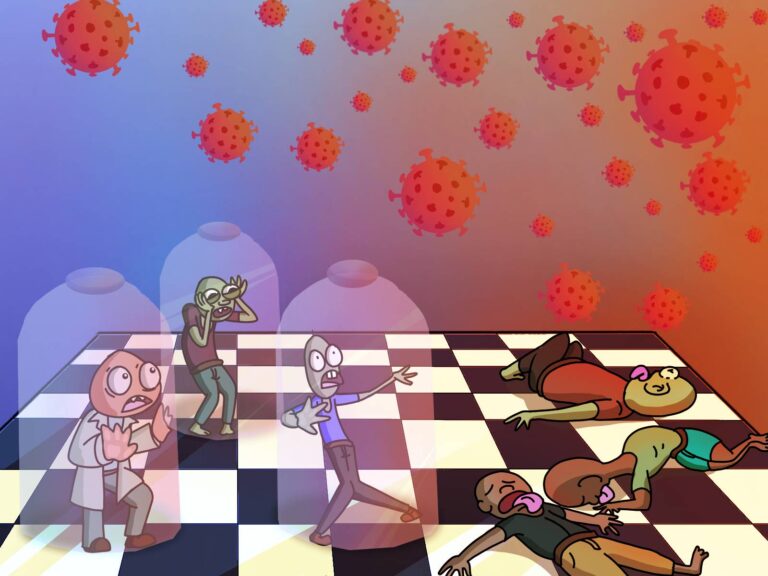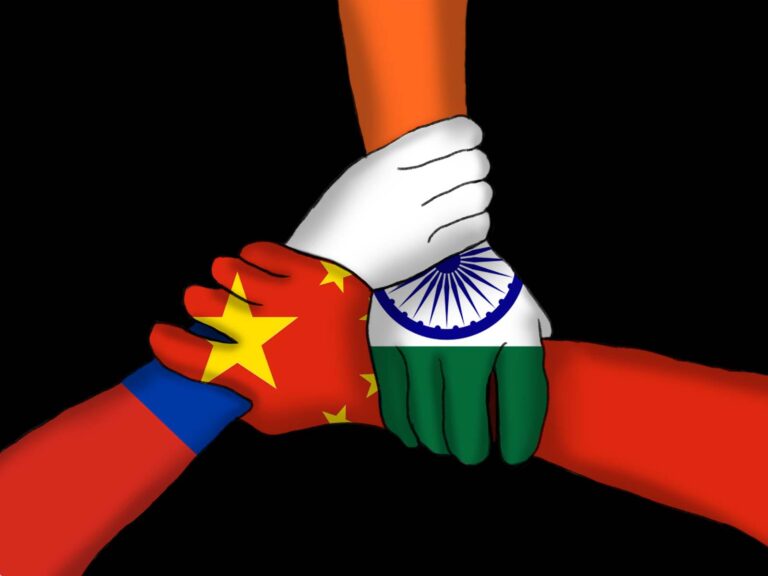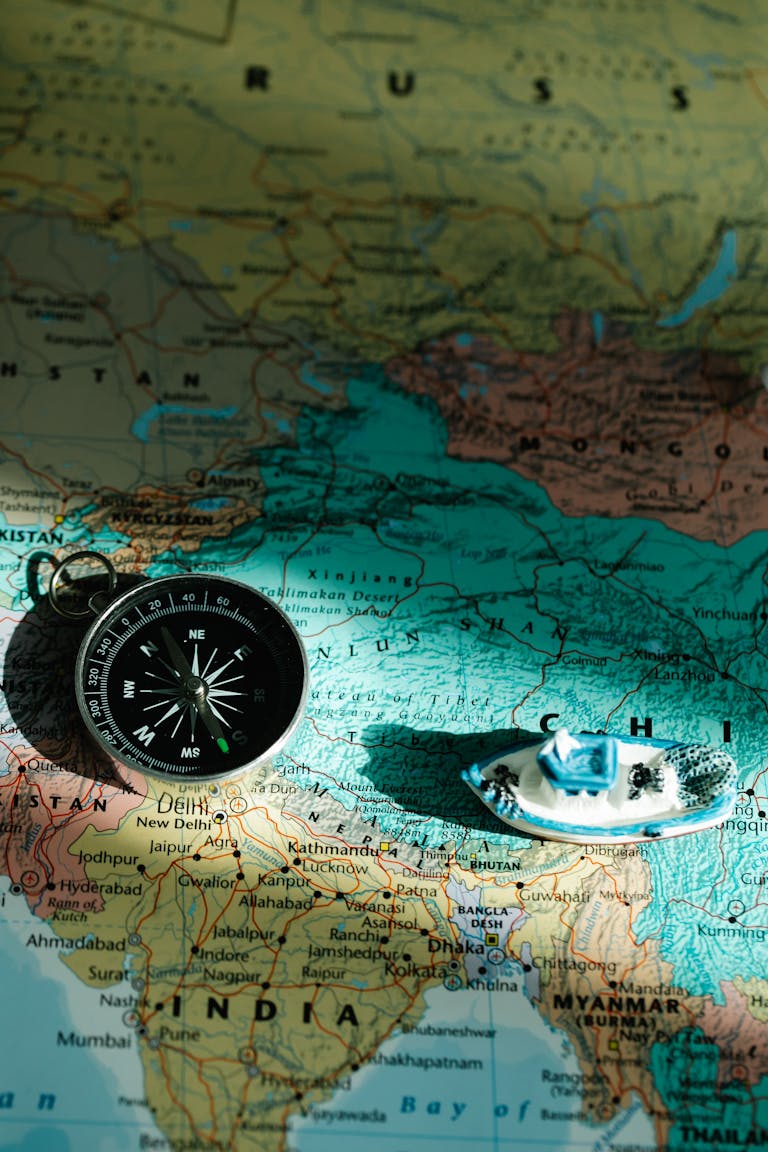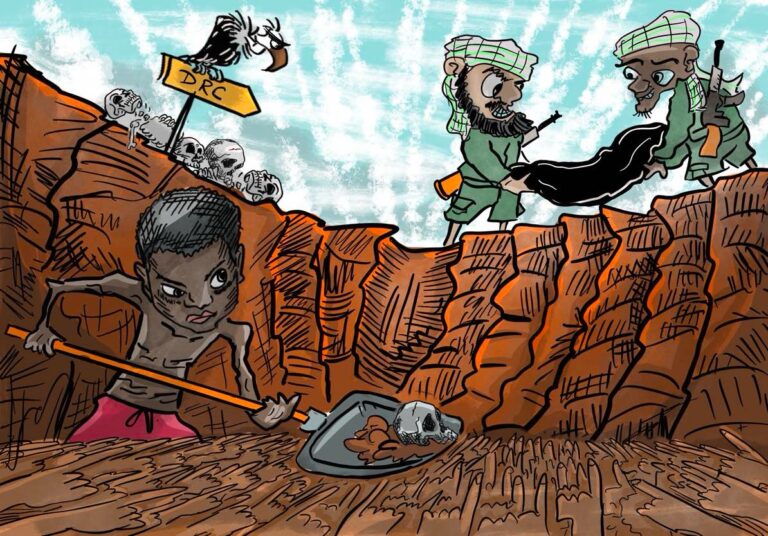The changing contours of Sino-USA relations

[responsivevoice_button voice=”US English Male” buttontext=”Read out this Theel for me”]
Introduction
The Covid Pandemic has unfurled an entirely new phase of global politics. Today we are in a transitory phase where we are quite sceptical about the future. It has been largely accepted by world leaders that the USA and China share the most vital bilateral relationship of the world. Both countries share a very paradoxical relationship. They consider each other as a prospective opponent and a strong economic partner at the same time. Today the world is standing at a crossroad where the USA and China are facing major challenges and the relations have progressed to a state of extreme antagonism in contemporary times. It is also evident that the liberal structure is crumbling. It is conceivable to witness another order very soon. The demise of the Liberal International Order (LIO) is one of the primary factors behind the cold war between the USA and China. There is a departure of the global assurances of the USA with the appointment of Donald Trump. The LIO was already in strain and now the covid pandemic has aggravated the end of the LIO. The international rivalry between USA and China has been augmented. By what means will the pandemic shape the future relations between the USA and China? Is it plausible to proceed with the existing Liberal International Order?
Role of the USA towards the Disintegration of LIO
The world is ruled by the LIO from a very long time. America was the pioneer of this order after 1945 to provide its hegemonic leadership, alleviate world economy, promote cooperation and advocate ‘free world’ values to the world. But today the existence of the LIO is threatened. It is observed that Trump is a severe critique of the LIO after his appointment. The further disengagement of Britain from the EU has been crucial in eroding the liberal order. In such a condition, Trump has encouraged the fragmentation within the EU and even the dissolution of the EU. He advocated economic nationalism which in a way threatens to reverse globalization (Stokes, 2018). Trump’s decisions like discarding the Trans-Pacific Partnership Trade Agreement (TPP), proposing to dismiss NAFTA, withdrawal from the Paris Peace Accord and questioning the credibility of NATO have made US the chief architect of the end of the LIO. The global shift in power can be called as the crisis of US hegemony which has been tied to the LIO for long where it will be replaced by another supreme structure giving rise to a post-western order. The crisis facing the LIO has also been described as the ‘Polanyi Crisis’ which indicate disorder and instability due to the development of global capitalism and market society has eroded the very foundation of the LIO (Ikenberry, 2018). In the Trump era, the sources of the demise of LIO have been quite clear, his adoption of the ‘America First’ policy proved to be disastrous for the LIO. The ‘America First’ policy intends to abandon goals which do not cater to the direct interests of the nation. It also shows a rollback from global institutions. Trump advocated the policy of cost-benefit bilateral strategy which dismisses a transforming international strategy dependent on goals like human rights and democracy (Stokes, 2018). He preferred to manage the forces independently according to the cost-benefit equation to analyse how each factor would function according to the economic and political benefits of the country. So this policy to put America first has isolated the USA on major global issues and destabilized its soft power diplomacy. There is a need to rejuvenate the idea of collective security to prevent the US from being isolated. The policy of isolationism would generate conflict among the sovereign states and the adoption of isolationist policies by the US would create a vacuum as a result of which emerging powers would try to attain that position. Now the unipolar world structure is ending and the old players of the postwar liberal order are diminishing. It does not specify a transfer to a structure ruled by China or a multipolar order because such aspects are still ambiguous.
Changing relation between the U.S.A & China
Over the years, it can be said that the trajectory of US-China relations has been covered with hostility as well as cooperation. Today, however, the relations between the two countries are in jeopardy as China moves ahead to replace the USA at the global level for capturing the position of the largest economy of the world. According to J. Mearsheimer, “The conflict between USA and China is unavoidable- a product of the inherent tensions between an established and a rising power.” (Steinberg, 2020). This reminds us of the fact that whether the USA and China would be able to escape the Thucydides’ Trap. Considering the present circumstances, both countries tend to be in a semi-war situation. Under the Trump era, the USA has suffered a setback in terms of its global commitments. It has withdrawn from TPP trade agreements, threatened to terminate NAFTA, abandoned the Paris Peace Accord, questioned US commitment to NATO and also crippled the WTO. Trump is favouring a bilateral and nationalist agenda instead of multilateral cooperation. China is very well trying to fill this power vacuum. Xi Jinping is appearing as an advocate of globalization and free trade and moving ahead towards an open global economy and opposed trade protectionism while the US steps back and puts ‘America First’ in all its policies (Graaff, 2020). The two largest economies of the world are engaged in an aggressive trade war after the USA imposed 25 per cent tariffs on $34 billion Chinese products. The trade war intensifies with the USA accusing China of stealing American intellectual property. Trump even warned the other countries not to allow Huawei equipment to build 5G networks in 2019. On the technological front, the USA has condemned reliance on Chinese technologies. In the upcoming 2020 US elections, Trump is using the China factor for the elections, by looking at China as an adversary and creating a strong dislike for China among the US citizens and the Chinese diplomats are giving enough opportunity for the USA to do so. China has adopted the policy of ‘Wolf-Warrior diplomacy’ where they would go to any extent to fulfil their interests; they are not scared of being looked at negatively. China has adopted an aggressive foreign policy and to counter that, democracies will have to work together because China is trying to produce an alternative world order (Pant, 2020). Recently, the announcement of a new bilateral economic dialogue between the USA and Taiwan has been disturbing for China because it considers Taiwan as a part of its territory. This move by the USA has furthered the tensions between both the countries (Tan, 2020). Again, investments between USA and China went down to a nine-year low in 2020 due to bilateral tension between both the countries. Capital flows have gone down to 16.2% to $10.9 billion and Trump has strictly prohibited the Chinese companies in the USA. (Reuters, 2020) Thus, it is hard for both nations to keep up a smooth working association with each other. This would harm the liberal international order because the two greatest economies are engaged in technological strife between each other and the world is witnessing the emergence of populist leaders across various countries which could signal an end to the LIO. Yet again, the ascent of the People’s Republic of China is a potential danger to the US-led liberal order because China is gradually showcasing itself as a champion of liberal globalization.
Politics through the transmission of virus
The Coronavirus pandemic has very much contributed to the collapse of the LIO and the weakening relations between USA and China. This pandemic has emerged as a global peril. Trump has been accusing China of spreading the virus and suppressing information about it. There can be three factors regarding the origin of the virus in China-
1. No proper hygienic conditions
2. Environmental dividend
3. The intentional spread of the virus as a form of warfare.
The European countries accused China of spreading misinformation, thus, to defend its image and foster cooperation. Now a generic question might arise that what does China get out of this? They wanted an orchestrated crisis leading to change. For a very long time, they were trying to become a global power. Also, in 2019 the Phase One US-China trade agreement was concluded which had the ‘Force Majeure Clause’ that if a certain disaster or something happens which cannot be controlled then the contractual obligations will not be honoured. In this agreement, China had to pay 250 billion dollars to the USA but soon after the release of the virus, the deal had to be dismissed by the USA. In this age of Weapons of Mass Destruction (WMD), conflict in the physical domain is less feasible so countries adopt other forms of warfare. Coronavirus is a form of unrestricted- hybrid biological warfare where it has attempted an attack on livelihood survival, economies of nations are incapacitated and a possible power shift can be seen (Williams, 2020). China took the initiative of providing masks, test kits and other medical supplies to the worst-affected countries. But some scholars have described this effort of China as ‘mask diplomacy.’ (Gan, 2020). The delayed response of China led to the aggravation of the virus. Liberal institutions are in a strained position with the outbreak of this virus as the economic crisis is cultivating a decline of democracy. Ex- In Hungary PM Viktor Orban responded to this pandemic by starting a rule by decree undermining democratic institutions and practices (Betizza, 2020). The pandemic seems to signal a worsening of relations between the US and China and the US taking the initiative to reduce imports from China. Various measures are taken to isolate China on the technological front like the UK proposed that ten countries including the G7 countries must work together to counter China’s 5G technology. Increased reliance on Chinese technologies is condemned by several countries including the USA. (Maini, 2020)
The road ahead: Beyond the pandemic
It is quite hard to anticipate the future and predict the course of the rivalry that is brewing between the USA and China. Here, the two prominent camps of IR- Realism and Liberalism would see the future of USA and China differently. Through the lens of liberalism, economic interdependence and development of international institutions would lead to the maintenance of peace between the two countries. The bilateral economic exchange would result in a mutual interest between the states and the more the trade and investment the less the conflict. Through the lens of Realism, the rising power of China is the major barrier to a positive relationship between the two countries. As long as it is a matter of competition and rivalry, it is very difficult for the USA and China to complement each other and have a peaceful future. Unfortunately, for China, it has become a matter of competition to overpower the USA and become the biggest economic power. In such a situation, the fate of US-China relations is very uncertain because throughout history it has been observed that rising powers have caused a lot of trouble because as the powers of a state increases, they would challenge existing territorial boundaries and international institutions and try to change them according to their interests. A dispute develops between a rising power and a dominant power and that is exactly what is happening to the USA and China (Friedberg, 2007). It can be seen that right now the conflict between US and China is at its apex, the worldwide economy is crashing, the UN Security Council is unable to manage the situation, a politicized World Health Organization is losing its credibility. Moreover, the crisis of democracy is worsening, the ascent of populism and xenophobia seems powerful and the liberal international order is constantly falling apart. The epitome of contention between USA and China has been regarding the US-led liberal international order. The USA must resume its use of active diplomacy and military deterrence. Trump has embraced a zero-sum game theory in terms of trade and technology. The withdrawal of the USA from several trade agreements is giving the entry to China to develop as the pioneer. A rules-based system can alter the situation in which people would be protected from the violent state capitalism of the autocratic powers and the USA must revive its free flow of ideas, free trade and global collaboration. Presently the gatekeepers of this order must come up to recoup its spirit as a network of various nations bound together by common qualities, interests and vulnerabilities.
Conclusion
If China continues with their aggressive foreign policy and tries to outperform the USA, then this great power rivalry would be strengthened which would prompt harsh relations between the two nations in the future. If they contest and confront each other then it might lead to a violent conflict causing a disruption in the entire world and pushing the world towards a second cold war. The upsurge of an authoritarian superpower like China would alter the balance of power and create a security flashpoint. However, such a situation can be avoided if both countries cooperate. Sino-American relations seem to be in a transforming stage- either there will be large-scale instabilities or there will be extreme adjustments in the methods of interaction between both the countries. The technological strife has been escalating between the USA and China and this conflict would have consequences at the political level as well which will affect mutual trust at the strategic level. Hence, there is a dire need to preserve a balance between competition and cooperation and the foundation of a possible change of world order is not only due to the rise of China but also due to the major foreign policy modifications of USA.
References
- Betizza, G. (2020, April). The pandemic and the end of the liberal world order. Retrieved May 2020, from Aspenia online: https://aspeniaonline.it/the-pandemic-and-the-end-of-the-liberal-world-order-as-we-knew-it/
- Friedberg, A. L. (2007). The Future of U.S China Relations: Is conflict inevitable? International Security, 7-45.
- Gan, N. (2020, May). Coronavirus has created a rift between the U.S and China that may take a generation to heal. Retrieved August 2020, from CNN: https://edition.cnn.com/2020/05/08/asia/us-china-relations-nationalism-intl-hnk/index.html
- Graaff, N. d. (2020). China’s rise in a liberal world order in transition. Review of International Political Economy.
- Ikenberry, G. J. (2018). The end of liberal international order? International Affairs.
- Maini, T. S. (2020, June). Post Pandemic: US, China and their deteriorating relationship. Retrieved 2020, from Modern diplomacy: https://moderndiplomacy.eu/2020/06/06/post-pandemic-us-china-and-their-deteriorating-relationship/
- Pant, H. V. (2020, August). US Elections 2020 and China’s Wolf-Warrior diplomacy. (N. Sahar, Interviewer)
- Reuters. (2020, September). US-China investment flows to 9y-low as bilateral tensions escalate. Retrieved October 2020, from Business Standard: https://www.business-standard.com/article/international/us-china-investment-flows-slide-to-9-y-low-as-bilateral-tensions-escalate-120091700278_1.html
- Steinberg, J. B. (2020). What went wrong? U.S-China relations from Tiananmen to Trump. Texas National Security Review, 119-133.
- Stokes, D. (2018). Trump, American hegemony and the future of the liberal international order. International Affairs, 1-18.
- Tan, H. (2020, September). US and Taiwan are drawing closer. Retrieved October 2020, from CNBC: https://www.cnbc.com/2020/09/09/the-us-and-taiwan-are-drawing-closer-together-irritating-china.html
- U.S Relations with China, 1949-2020. (n.d.). Retrieved August 2020, from Council on Foreign Relations: https://www.cfr.org/timeline/us-relations-china
- Williams, D. L. (2020). The strategic dimensions of conflict: Covid 19 and the strategic traps. Kerala: Centre for Public Policy Research.
Image Credit: Wiki Commons









Interesting Read! Thanks for sharing this across!
Very well written.
Very well written.